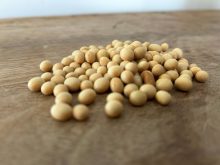Reuters — The U.S. hog herd grew nine per cent during the March-May quarter compared with a year ago, a U.S. Department of Agriculture report showed on Friday, reflecting better measures to combat a deadly pig virus which resulted in record pigs per litter, analysts said.
However, weaker hog prices last quarter eroded farmer profits enough to discourage them from actively adding to their herds, they said.
The USDA report showed the U.S. hog herd as of June 1 at 109 percent of the year-ago level, at 66.9 million head. It was the largest June inventory since 67.1 million in 2008.
Read Also

U.S. grains: Wheat futures slide on rising world production estimates
U.S. wheat futures fell more than one per cent on Wednesday to their lowest since late October on reminders of…
Analysts, on average, expected 66.493 million head, or 108 per cent of the year-earlier herd.
The U.S. breeding herd was 101 per cent of the year-ago level, at 5.926 million head, compared with average trade expectations for 102 per cent, or 5.972 million.
The June 1 supply of market-ready hogs for sale to packers was 109 per cent of a year earlier at 60.975 million head. Analysts, on average, expected a 8.9 per cent increase, or 60.671 million.
Pigs per litter, the category most affected by the virus, was at 10.37 during the spring period, or 106 per cent of the 9.78 a year ago. This is a new record for any quarter, topping the 10.33 pigs per litter set in June-August 2013.
Tighter biosecurity measures and vaccines helped control the porcine epidemic diarrhea virus (PEDv) which has killed an estimated eight million U.S. pigs since March 2013.
Supplies will be plentiful over the next several months, partly based on the heavier hog weights in one category of the data, said University of Missouri economist Ron Plain.
But the lighter hog weights in another category and reduced farrowing intentions — the number of female hogs expected to give birth — imply fewer hogs in 2016, he said.
Pork export challenges and overproduction cut hog prices nearly in half compared with a year ago, causing producers to reduce the breeding herd, said Plain.
Friday’s USDA survey suggests plentiful supplies through the summer, which could pressure nearby Chicago Mercantile Exchange lean hog futures on Monday, analysts said. Deferred contracts may gain based on easing production beginning later this year, they said.
“You’ll get a bearish reaction on the front end (nearby futures) on Monday, but whether we get a follow-through is open to question,” said Doane Advisory Services economist Dan Vaught, citing recent market losses that may have already factored in a bearish report.
— Theopolis Waters reports on livestock markets for Reuters from Chicago.















